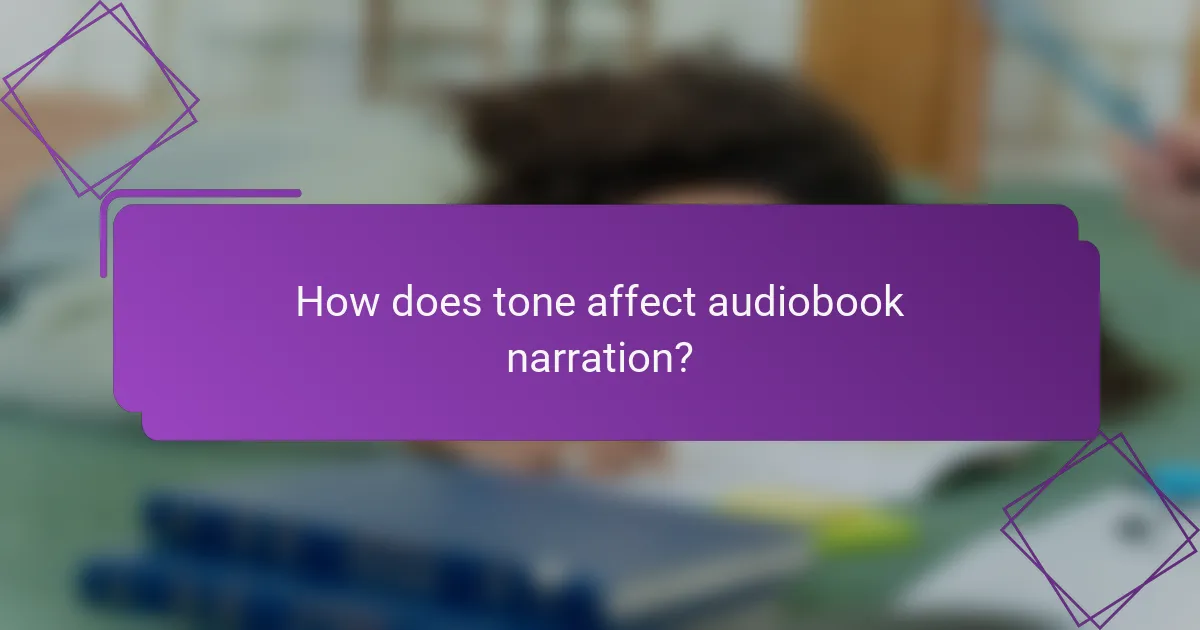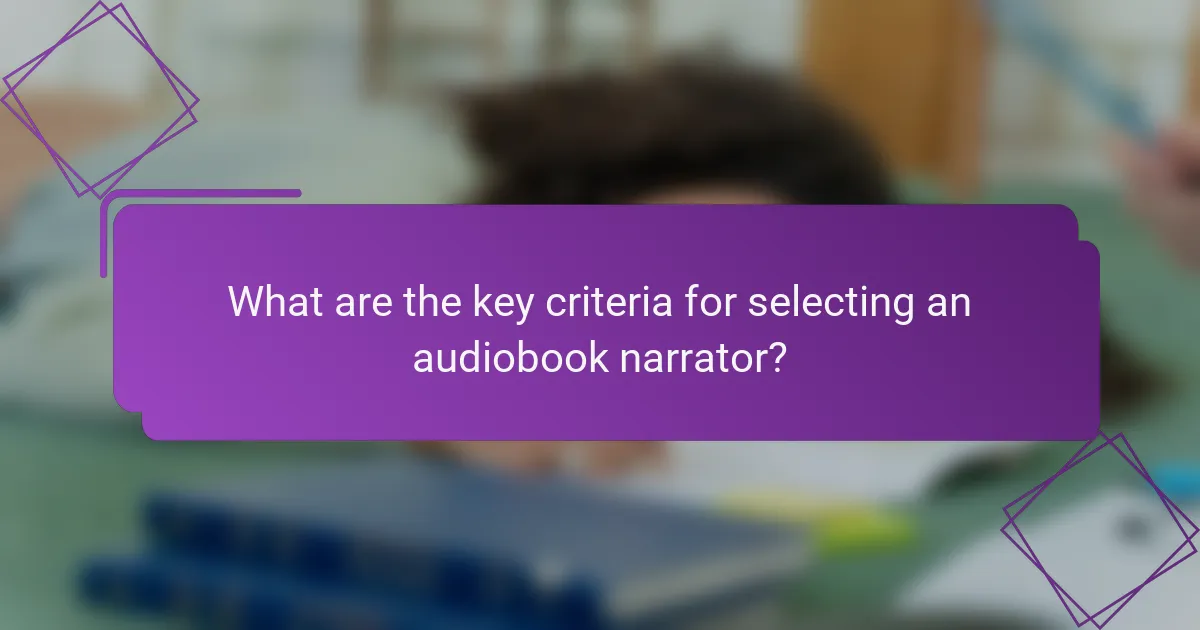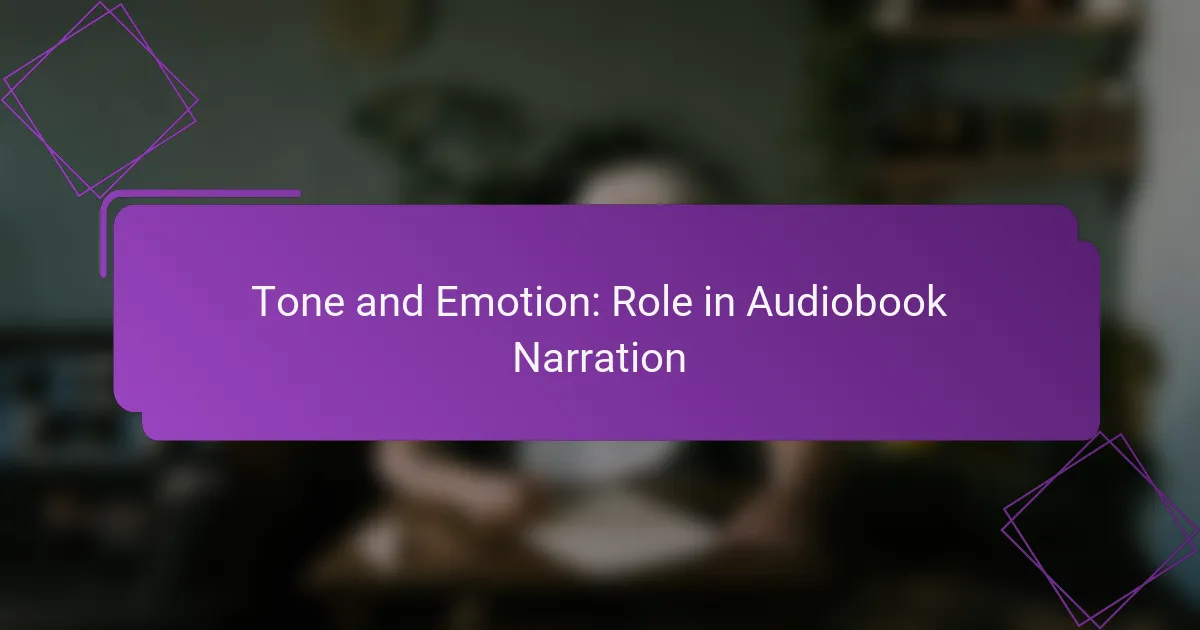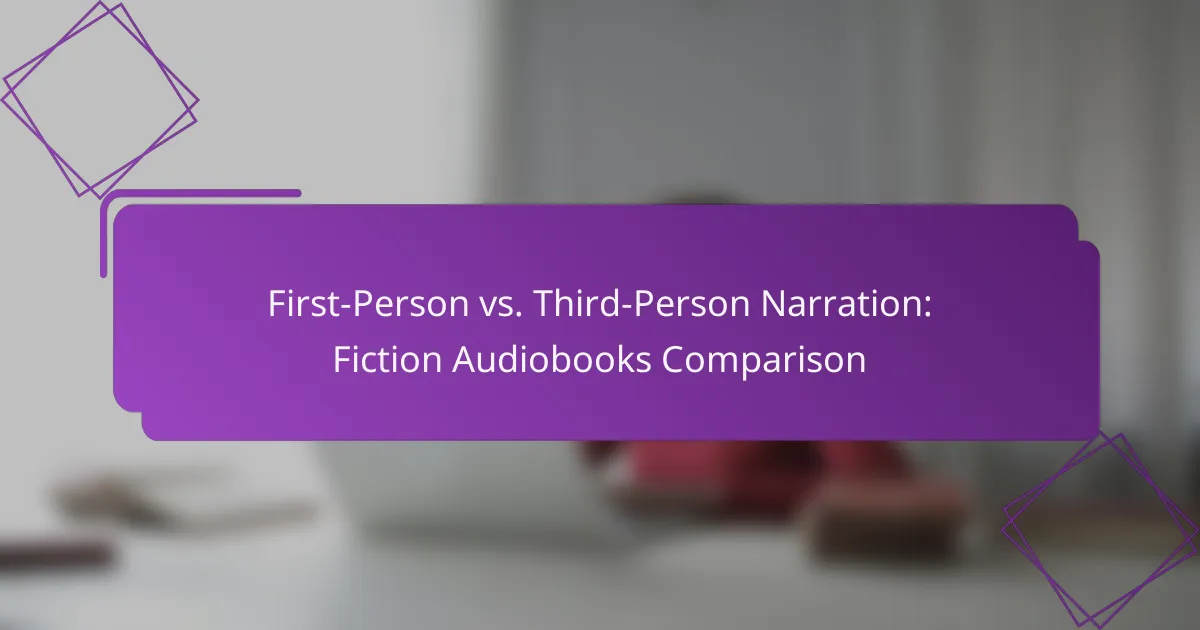The tone and emotion in audiobook narration play a crucial role in shaping the listener’s experience and connection to the story. A carefully selected tone can enhance engagement and deepen emotional resonance, allowing listeners to fully immerse themselves in the narrative. By effectively conveying emotions such as joy, suspense, and sadness, narrators bring characters to life and create memorable storytelling moments.

How does tone affect audiobook narration?
Tone significantly impacts audiobook narration by influencing how listeners perceive the story and connect with its characters. A well-chosen tone can enhance engagement, shape character interpretation, and foster emotional resonance, making the listening experience more immersive.
Influences listener engagement
The tone of an audiobook can either draw listeners in or push them away. A lively, upbeat tone may captivate an audience, while a monotone delivery can lead to disengagement. For example, a thrilling adventure story benefits from a dynamic tone that matches the pace of the plot, keeping listeners on the edge of their seats.
To maintain listener interest, narrators should vary their tone throughout the narration, adjusting it to reflect changes in mood or action. This variation can help sustain attention and enhance the overall experience.
Shapes character perception
Tone plays a crucial role in how listeners perceive characters in an audiobook. A character’s personality can be conveyed through the narrator’s tone, with a warm, friendly tone suggesting kindness, while a cold, detached tone might indicate villainy. This auditory cue helps listeners form mental images of characters and their motivations.
For instance, a narrator might use a softer tone for a sympathetic character and a harsher tone for an antagonist, reinforcing the listener’s understanding of their roles in the story. This technique can deepen the emotional impact of the narrative.
Enhances emotional connection
The right tone can evoke strong emotions in listeners, creating a deeper connection to the story. A narrator who skillfully employs tone can make moments of joy, sadness, or tension resonate more profoundly. For example, a heartfelt tone during a poignant scene can amplify the emotional weight of the narrative.
To enhance emotional connection, narrators should be attuned to the story’s themes and character arcs, adjusting their tone to reflect these elements. This practice not only engages listeners but also allows them to experience the narrative on a more personal level.

What emotions are most impactful in audiobooks?
Emotions such as joy, suspense, and sadness significantly enhance the listener’s experience in audiobooks. These feelings can create a deeper connection to the story, making it more memorable and engaging.
Joy and happiness
Joy and happiness in audiobooks often come from uplifting narratives or humorous characters. When narrators use a bright tone and lively pacing, they can evoke feelings of warmth and positivity, making the listener feel more connected to the story.
To effectively convey joy, narrators should focus on their vocal inflections and pacing. A faster tempo with a cheerful tone can enhance the overall mood, encouraging listeners to feel uplifted and entertained.
Suspense and tension
Suspense and tension are crucial for gripping storytelling, often found in thrillers or mysteries. These emotions keep listeners on the edge of their seats, eagerly anticipating what will happen next.
Narrators can create suspense by varying their tone and pacing, using slower speech to build tension before a climactic moment. Strategic pauses and lowered vocal intensity can heighten the sense of unease, drawing listeners deeper into the narrative.
Sadness and empathy
Sadness and empathy resonate strongly in audiobooks that explore deep emotional themes. When narrators convey these feelings authentically, they can evoke a powerful emotional response from the audience, fostering a sense of connection with the characters.
To effectively express sadness, narrators should adopt a softer tone and slower pacing. This approach allows listeners to absorb the weight of the story, creating a poignant experience that lingers long after the narration ends.

Which narrators excel in conveying emotion?
Several narrators stand out for their ability to convey emotion effectively, enhancing the listener’s experience. Their vocal techniques, character interpretations, and emotional range contribute significantly to the storytelling in audiobooks.
Kate Reading
Kate Reading is renowned for her ability to bring characters to life through her expressive voice and nuanced performances. She often employs a range of tones and pacing to match the emotional depth of the narrative, making her a favorite for romance and historical fiction genres.
Her skill in portraying different characters allows listeners to feel a strong connection to the story. For example, her work in series like “The Wheel of Time” showcases her ability to switch between various personalities seamlessly, enhancing the emotional impact of the plot.
Scott Brick
Scott Brick excels in delivering gripping narratives with a commanding presence. His deep voice and clear diction help to convey tension and drama, making him particularly effective in thrillers and mysteries.
Brick’s ability to modulate his tone according to the story’s mood allows listeners to engage deeply with the material. His performances in titles like “The Martian” demonstrate how he can evoke suspense and urgency, drawing the audience into the experience.
Bahni Turpin
Bahni Turpin is celebrated for her vibrant and dynamic storytelling style. She brings a unique energy to her performances, particularly in works that explore diverse characters and cultures.
Her skill in using varied vocal inflections and emotional resonance makes her a standout choice for contemporary fiction and memoirs. In audiobooks like “The Hate U Give,” Turpin’s ability to convey the protagonist’s struggles and triumphs resonates powerfully with listeners, enhancing the overall narrative experience.

How can narrators improve their emotional delivery?
Narrators can enhance their emotional delivery by focusing on character analysis, employing vocal techniques, and engaging in emotional exercises. These strategies help create a more immersive experience for listeners, making the narration more compelling and relatable.
Practice with character analysis
Understanding the characters deeply is essential for effective emotional delivery. Narrators should analyze each character’s background, motivations, and emotional states to convey their feelings authentically. This can involve creating character profiles that outline key traits and emotional arcs.
For example, a character who is grieving may require a softer, more subdued tone, while a character experiencing joy might be portrayed with a brighter, more energetic voice. By practicing these nuances, narrators can better embody each character’s emotional journey.
Utilize vocal techniques
Vocal techniques play a crucial role in delivering emotions effectively. Narrators should experiment with pitch, pace, and volume to match the emotional tone of the narrative. For instance, lowering the pitch can convey sadness, while a higher pitch can express excitement.
Additionally, varying the pace can enhance emotional impact; slower delivery can evoke tension or sadness, while faster speech can create urgency. Practicing these techniques can help narrators find the right balance for each scene.
Engage in emotional exercises
Emotional exercises can help narrators connect with their own feelings, which in turn enhances their ability to convey emotions authentically. Techniques such as improvisation, role-playing, or even journaling about personal experiences can be beneficial. These practices allow narrators to tap into genuine emotions that resonate with the characters they portray.
Regularly incorporating these exercises into their routine can lead to improved emotional range and depth in their performances. Narrators should aim to explore a variety of emotions to build a versatile emotional toolkit for their narrations.

What are the key criteria for selecting an audiobook narrator?
When selecting an audiobook narrator, consider their vocal range, emotional storytelling ability, and compatibility with the genre. These criteria ensure that the narration enhances the listener’s experience and aligns with the content’s tone and style.
Vocal range and versatility
A narrator’s vocal range and versatility are crucial for bringing characters and narratives to life. A skilled narrator can adjust their voice to suit different characters, ages, and emotions, making the story more engaging. Look for narrators who can shift between various tones and styles, as this can significantly enhance the overall listening experience.
For example, a narrator who can convincingly portray both a young child and an elderly character demonstrates a wide vocal range. This versatility allows them to adapt to various genres, from children’s literature to complex dramas.
Experience in emotional storytelling
Experience in emotional storytelling is essential for an effective audiobook narrator. A narrator must convey the underlying emotions of the text, capturing the listener’s attention and evoking feelings that resonate with the story. This skill involves not just reading the words but interpreting the narrative’s emotional depth.
Consider narrators who have a background in acting or have received training in voice modulation and emotional expression. Their ability to infuse passion and nuance into their performance can make a significant difference in how the story is perceived.
Compatibility with the genre
Compatibility with the genre is vital when choosing an audiobook narrator. Different genres require distinct narration styles; for instance, a thriller may benefit from a tense, fast-paced delivery, while a romance might call for a softer, more intimate tone. The right narrator should align with the genre’s expectations to enhance the listener’s immersion.
To assess compatibility, listen to samples of the narrator’s previous work in similar genres. This will help you gauge their ability to match the specific tone and pacing that the genre demands, ensuring a more satisfying listening experience.



